Puff Pastry
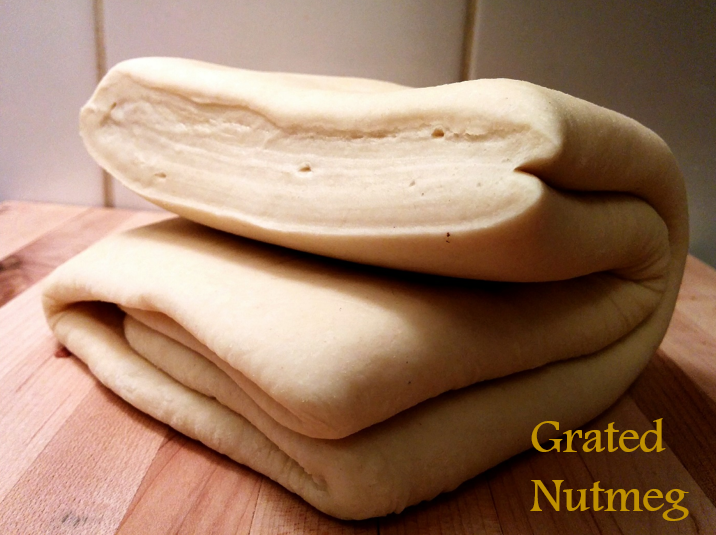
Puff pastry, also referred to as ” pâte feuilletée” is a light, flaky, leavened pastry containing several layers of fat, in this case, butter. It is a laminated dough which has two elements: a cough pocket and a butter pocket. Puff pastry is used for a wide variety of desserts, baked goods and savory dishes like Napoleon, Beef Wellington, Chicken ala King, et cetera. A lot of people find puff pastry very intimidating to make. In actual fact, it is really quite easy to make. Having said that, it does have its technicalities. There are certain things I feel every cook should do at least once in his or her life time like poaching an egg and baking a souffle. Making your own puff pastry is one of those things.
INGREDIENTS:
Dough
(1) 130 Grams Bread Flour (1 Cup)
(2) 195 Grams All Purpose Flour (1-1/2 Cups)
(3) 8 Grams Salt (1-1/3 Teaspoon)
(4) 1 Cup Water
Butter Pocket
(1) 65 Grams All Purpose Flour (1/2 Cup)
(2) 250 Grams Unsalted Butter (1 Cup + 2 Tablespoons) (See Note 1)
NOTES:
(1) Butter should be cold but not solid.
PROCEDURE:
Dough:
(1) Place flours and salt in the bowl of a stand mixer fixed with the paddle attachment.
(2) With the mixer running at low speed, add the water in drizzles until the dough comes together.
(3) Switch to dough hook and knead dough at medium speed until smooth and stretchy. The sides of the bowl should be clean and the dough should wrap around the dough hook. This takes about 10 minutes.
(4) Turn dough on a lightly floured surface and knead into a ball.
(5) Place dough in a bowl, cover with a tea towel and allow the dough to rest for at least 30 minutes. This will relax the gluten and make the dough stretch well during lamination.
NOTE: This process can be done by hand. Note however that this dough is very sticky and might be somewhat hard to work with.
Butter Pocket
(1) Place flour in bowl of stand mixer attached with the paddle attachment. You do not need to clean bowl after making dough.
(2) Cut butter into cubes. With mixer running at medium speed, add butter to flour and mix until both have blended properly.
(3) You have 2 options here:
A. Place the butter mixture in a ziploc bag and spread so it takes on the shape of the bag.
B. Place the butter mixture between 2 sheets of parchment paper and roll with rolling pin until you get a square about 1/2 inch thick.
(4) Place butter pocket in the fridge to solidify for about 30 minutes.
Lamination
Lamination involves creating pockets of butter between the dough. The purpose of lamination is to create various pockets of butter between layers of dough. During baking, the butter in these pockets melts which causes the dough to rise. Note these during lamination:
A. It is important to make sure that you do not tear the dough during lamination. If this is done, the butter would spill out, make the lamination process messy and more difficult, and affect the final pastry product.
B. You have to work fast as you do not want the butter to melt during lamination. The temperature in your kitchen should not be too high. You need a cool environment.
C. There are several forms of lamination. The two most popular are the 3 fold and 4 fold types of lamination. There is also a technique called inverted puff pastry. I will be using the 4 fold method here. I will however show you what the 3 fold method looks like.
(1) Place the dough on a lightly floured surface and roll out into a rough rectangle, about 10 x 20 inches.
(2) Place the butter pocket (cut out ziploc bag if using) in the middle of the rolled out dough and wrap dough around it.
(3) Turn dough upside down so seam is underneath.
(4) Use rolling pin to beat top of dough lightly to make the butter more pliable.
NOTE: If butter is too strong it would tear the dough during lamination. Beating the dough lightly before rolling out is thus essential.
(5) Roll dough out again into a 20 x 10 inch rectangle, being careful not to tear dough. (You have 1 Layer of Butter Between Dough Now)
(6) After rolling out dough, it is time to fold it.
A. For the 3 fold method, make sure the dough is lying horizontally on your work surface. Fold one end of dough 1/3 way inwards. Then fold the other end on top of the first fold. It is called the 3 fold method because at the end of the folding process, you will end up with 3 folds (You will have 3 layers of butter between the dough).
B. For the 4 fold method, make sure the dough is lying horizontally on your work surface. Fold one end of dough 1/4 way inwards. Fold the other end 1/4 way inwards. Then fold dough at middle to overlap both folds, thereby creating 4 folds. (You will have 4 layers of butter between the dough)
(7) Make an indentation at one end of the dough so you know how many rounds of folding you have done.
(8) Wrap dough with parchment paper or cling film so it does not dry out and return to fridge for 30 minutes.
NOTE: If you do not wrap dough, it would dry out, thus making it more difficult to roll out and fold. It might also lead to the dough breaking.
(9) You will need to fold this dough a total of 4 times. For the 2nd, 3rd and 4th folds, take dough out of fridge after 30 minutes, place vertically on your work surface and roll out into a 20 x 10 inch rectangle. Repeat the folds as in the first fold, wrapping and placing dough in the fridge for 30 minutes after each fold.
(10) At the end of the 4th fold, the dough should be wrapped and placed in the fridge for 30 minutes before rolling out for use. If you are not using the dough immediately, it can be stored in the freezer for months until ready for use. If storing in freezer, thaw dough in fridge over night before use.
Calculating Butter Layers Using 4 Fold Method
(1) After 1st fold = 4 Layers of Butter
(2) After 2nd Fold = 16 Layers of Butter
(3) After 3rd Fold = 64 Layers of Butter
(4) After 4th Fold = 256 Layers of Butter (Yup!)
Rising Power of Puff Pasty (Baking Test)
The disk of puff pastry was baked for 15 minutes. The result speaks for itself.
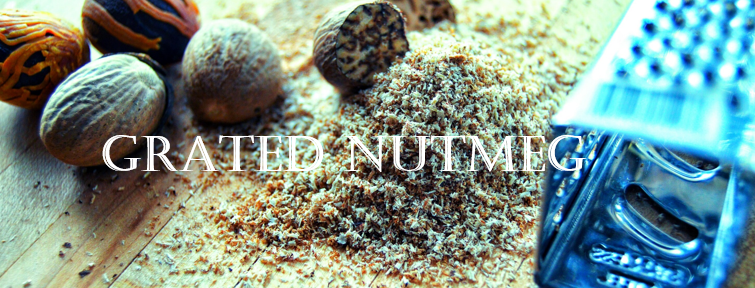
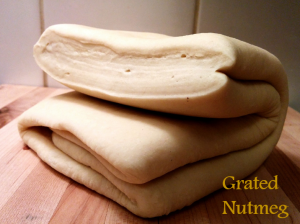
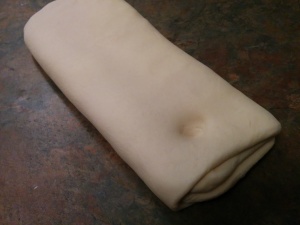
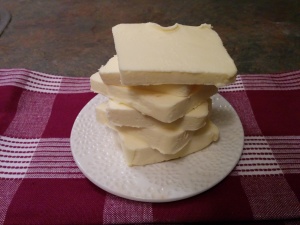
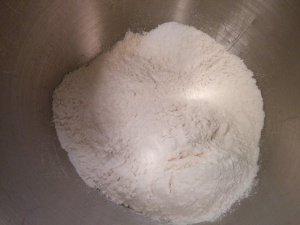
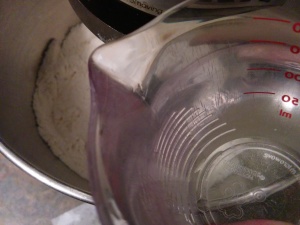
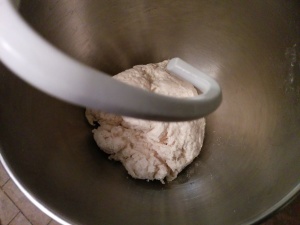
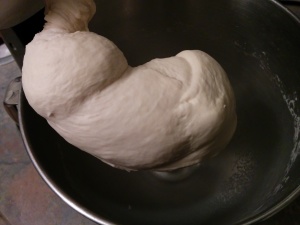
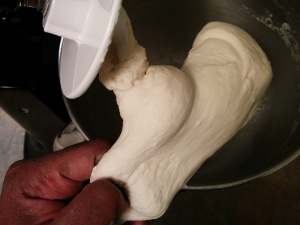
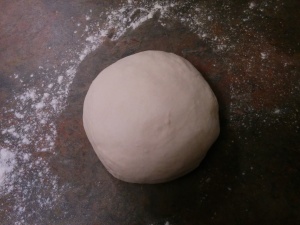
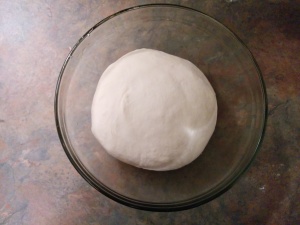
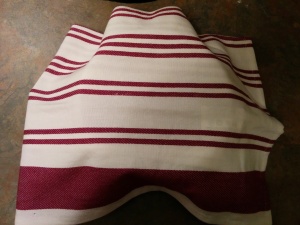
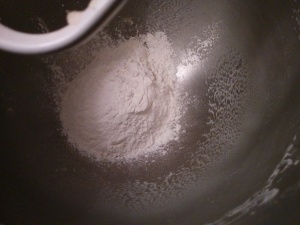
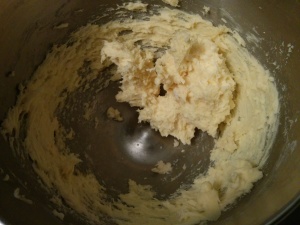
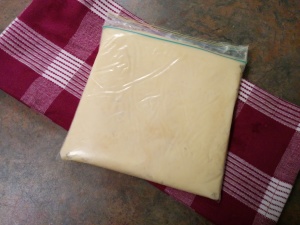
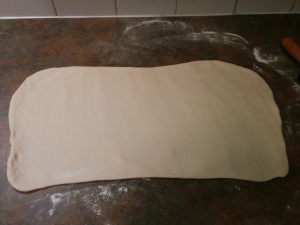
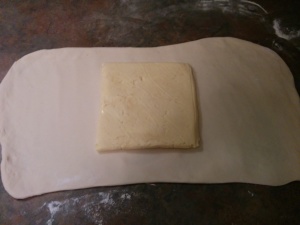
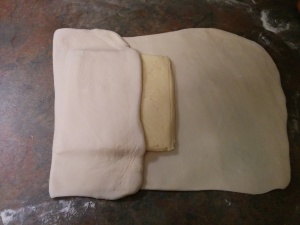
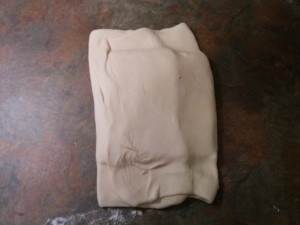
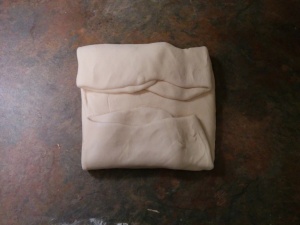
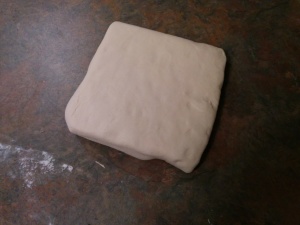
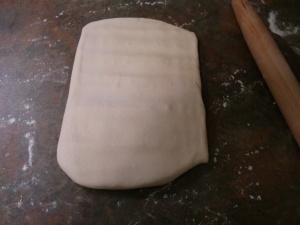
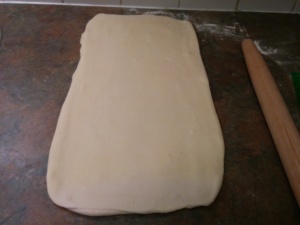
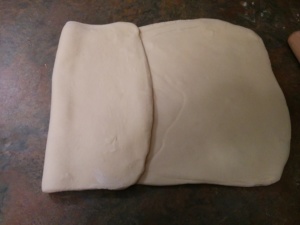
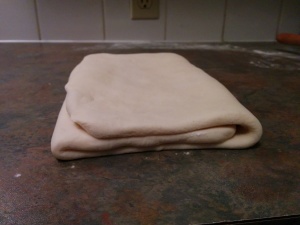
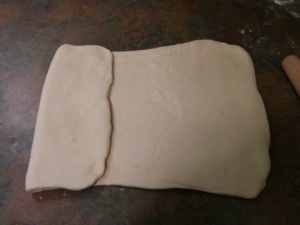
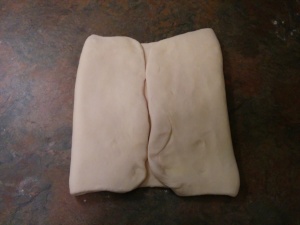
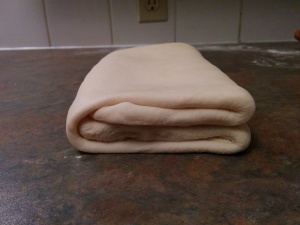
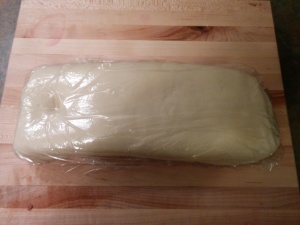
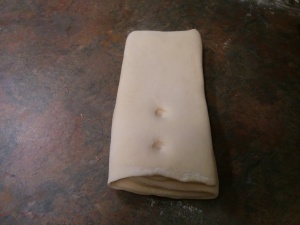
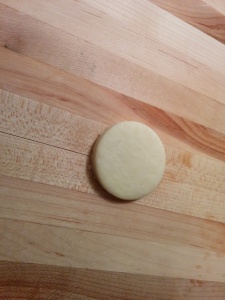
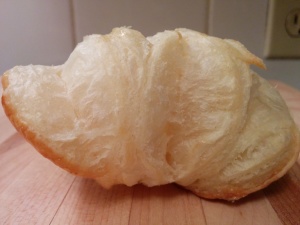
Wow! That result sure speaks for itself! Can this be achieved with only regular AP flour?
Weldone Terry!
Thanks Cindy. Regular AP flour should work. The dough would however not stretch as much as if bread flour is added. Bread flour has more gluten.
Hello
Hi
hey Terry ,your really the boss,thanks for this recipe of yours ,tried a recipe i got from net and it was frustrating as i have to directly fold in the cold butter,but mixing butter with a little flour will sure make it easier.After my experience i swore never to make puff pastry again,but guess am sure trying this
Yeah, puff pastry can be tricky. Do give it a go again using this recipe.
Hi Terry. Thank you for this detailed tutorial. I hope to give this a try soon, hopefully. I’d like to learn how to make Bread flour. Please do you have a recipe for this, and if not, please is one coming soon?
No I dont. I just buy bread flour.